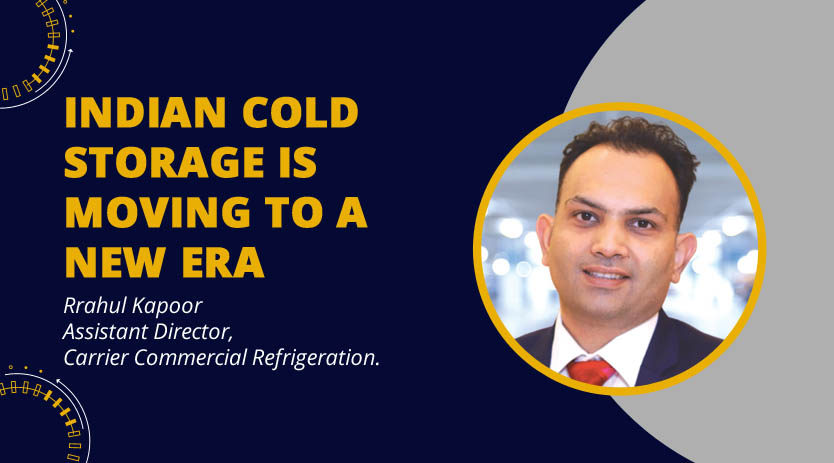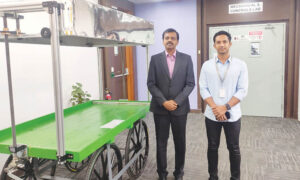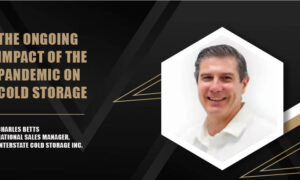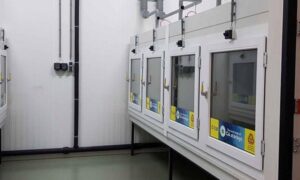Global standards of quality, safety, enhanced efficiency and investments need to be the foundations on which our cold chains need to be built.
India is currently the world’s largest producer of milk. It is also the second-largest producer of fruits and vegetables. It has a substantial production of seafood, meat and poultry products – all such major categories demanding robust and efficient management of its supply chain. As per a recent CRISIL Research report, the Indian Cold Chain Industry amounting to INR 24,800 Crore in 2017, is set to reach INR 47,200 Crore by 2022 at 13 to 15 percent CAGR.
Traditionally, India’s cold storage was developed for bulk products like onions and potatoes, with major facilities concentrated in UP, West Bengal, Punjab, and Gujarat. Many sectors had their cold chain facilities depending upon the usage. However, a clear link between the front-end & back-end needed to be clearly included since the cold chain was not there. The inadequate cold-chain infrastructure hampered India’s food exports, and most developed countries worldwide have stringent guidelines for importing agricultural and processed food products. However, trends are changing now.
I have been actively involved in India’s whole cold chain development model since 2005. I call this a ‘Cold Chain Movement. However, after about 17 years, we have come to a stage where the industry is about to erupt. Success numbers posted by listed public companies and their narrative on the cold chain are testimony to that. Having observed this sector’s ground realities, I proudly state that India’s cold chain sector has grown in leaps and bounds over the last 15 years. We have set up a vast network of pack houses, multicommodity cold storage, 3PL cold chain enabled infrastructure, Food processing units, Dairy plants, and Meat plants. Horticulture-specific cold storages closer to the source, like Apple CA in HP & J&K, Potato cold stores in UP, Gujarat & MP; FPO setting up pack houses, and many more success stories are there. We have moved from being a single commodity cold storage country to a multi-commodity one, though we are still a work-in-progress country.
Safety, global standards of quality, enhanced efficiency and investments need to be the foundations on which our cold chains need to be built. Being energy intensive due to refrigeration, these supply chains need to be monitored for their environmental impact. There is a pressing need to create a reformed workforce to elevate India’s standing in the cold chain market globally.
Indian cold chain market drivers
Organised retail is expected to be amongst India’s biggest drivers of the cold chain market. With the growth of organised food retail, we expect consumers to access a large variety of fresh fruits and vegetables, dairy products, meat and poultry products and several other temperature sensitive commodities that require cold chain storage and transportation. Most organised retail players have acknowledged that setting up a robust cold chain infrastructure is critical in efficiently managing their supply chains.
Growth in food delivery companies: There has been a mad rush and competition in the food delivery business since the Covid disruption. We see all kinds of business models, from 10-minute to 30-minute deliveries. This will be possible only if there is enough distribution system available at the back end, including 3PL partnerships, last mile cold rooms and delivery hubs. All of that has worked as dopamine to the cold room industry, accelerating its growth.
Growth in the food processing sector
There has been a marked improvement in the consumer demand for processed foods. The Indian government has announced the intent to establish several mega food parks. This augurs well for the development of the cold chain industry in the country. The dairy segment is another classic example where we see a lot of investment in various processing companies. A few years back, a variety of cheese and other products being produced was never heard of. We must all be proud of how our fisheries industry has responded to the global supply shortage. We became global leaders in supplying high-quality seafood when we faced a shortage because of the lockdown in many SEA countries during 2020.
Growth in demand for fresh fruits and vegetables
Due to increased risks and investments in grain crops, farmers are moving towards cultivating fruits and vegetables. Most of these crops require refrigeration and are expected to encourage the development of cold storage facilities. We saw an exponential rise in the demand for mushroom chambers, ripening facilities, and Apple CA storage. This clearly shows that people are moving away from Potato cold storage to more multicommodity models. It will provide better ROI and ensure the plant runs closer to 365 days of the year.
Local cold chain companies Covid helped break the barriers in the cold chain warehousing sectors. The low lying warehouse companies, happy doing the dry warehousing until this time, opened to the idea of setting up or converting dry warehouses into the cold chain model. The ‘From the pickup to the last mile’ trend is visible again from the growth chart of all publicly listed warehouse companies. The revenue growth on average has been above 15 percent.
Indian Cold Chain Market Trends Regulations: BEE is working closely with the refrigeration industry to impose the standards strictly. In years to come, this will lay a strong foundation for energy efficient products to be developed & sold in India.
As they say, companies sell what customers buy – So we expect the following changes in the behaviour of sales nationwide in the cold chain industry.
- Equipment using CFC-free refrigerants. This will help India meet the net zero targets in time, and the refrigeration industry will be able to contribute a bit towards this task.
- Higher COP standards will come into play as soon as BEE starts the energy labelling program. It will result in customers knowing the correct energy consumption of the equipment being bought, and high-efficiency products will get an advantage.
- In India-like conditions, there is a significant temperature difference across seasons, day & night and loading patterns. Using Inverter condensing units will bring in 15-25 per cent efficiency in the overall operations cost of the project. Indirectly this will result in power savings.
- We see another clear trend moving towards precise system design application-wise.
Revised norms
Indian MIDH standards were formed many years back and laid on the old footprint of expanding cold storage for many years since they need to be reviewed for revision in the 2022 context and onwards. There will be a definite paradigm shift towards buying & selling patterns once the norms are revised.
Reach in Tier II & III
The refrigeration industry is expanding at the fastest pace ever. As the industry reaches domestic users in smaller pockets servicing will become a significant challenge. This will birth digital transformations like remote monitoring, pre-diagnostics etc., in the Indian refrigeration Industry.
Retrofit & replacement
It will get harder & harder for users having older refrigeration systems to compete with newly set up plants. This will generate a big retrofit & replacement opportunity. The industry will have to capitalise on this opportunity to ensure most energy efficient systems are offered.
New Products
Every industry has its niche. Similarly, solutions must be different in meeting customer demands and requirements. We will see a lot of innovation and new product launches in almost every segment. QSR may need fast chilling options. The seafood industry may need no contact freezers, and the dairy industry has high-capacity blast freezers etc. The prerogative to develop new innovative products will be with the refrigeration industry, and we shall see a winner.
Conclusion
The Cold Chain Industry has never been in better hands. The government’s push to FDI in Food processing opened the floodgates. The customer’s speed of growth will define the next chapter in this development. We have various other opportunities owing to strict global laws, the government’s net zero target and corporate companies setting up their parameters. This will be the dawn of a ‘New era for the cold room industry, and I hope each of us will capitalise on this and take this movement forward.
Cookie Consent
We use cookies to personalize your experience. By continuing to visit this website you agree to our Terms & Conditions, Privacy Policy and Cookie Policy.















